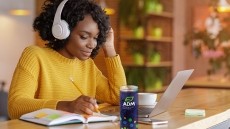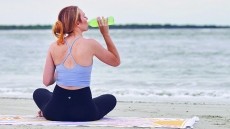EFSA to speed up review of colours from hyperactive kids study
prioritise its own review of the six colours at the heart of the
recent study linking certain artificial additives with children's
hyperactivity.
In a statement issued today, EFSA also said that it will review the data from the University of Southampton, and expects to complete its assessment by the end of January 2008, thereby responding to the request of the European Commission to provide an opinion on the study. The authority is acting in response to the UK's Food Standards Agency (FSA) sending data from a study published in The Lancet earlier this month by researchers at Southampton University. The data provided by the FSA appears insufficient however with EFSA stating it will ask for additional information. The authority's panel for additives, flavourings, processing aids and materials in contact with food (AFC) has identified a number of central issues which it will study in depth, including the robustness of the study design and methodology, the statistical analysis, the role of genetic predisposition, and the clinical significance of the findings for individuals or the population in general. "Examination of these aspects will enable the Panel to assess the implications of the findings and their relevance for drawing definitive conclusions on cause and effect and the possible role of particular colours," stated EFSA. The study at the centre of the debate was conducted in two phases. In stage one, 153 three-year olds and 144 eight- and nine-year olds were given one of two drink mixes containing artificial food colours and additives, or a placebo. The children were drawn from general population and across a range of hyperactivity and ADHD (attention deficit hyperactivity disorder) severities. Mix A contained sunset yellow (E110), tartrazine (E102), carmoisine (E122), ponceau 4R (E124) and sodium benzoate (E211). This same mix was used in an earlier study on a cohort of three-year-olds which was deemed inconclusive because the effects were not confirmed by clinicians. Mix B contained sunset yellow (E110), quinoline yellow (E104), carmoisine (E122), allura red (E129) and sodium benzoate (E211). Phase one lasted six weeks, and every child consuming the mixes and the placebo for one week each, with a one week wash-out period between each. Parents were asked to keep other sources of artificial colours out of the diet, and to keep a diary of violations. Phase two involved some of the children from the older group - responders and non-responders - during two half-day session a week apart, at which they were given either a placebo or an active drink similar to mix A or B, but the whole day's dose was given at once. The conclusions drawn by the researchers were that artificial food colours and additives were seen to exacerbate hyperactive behaviour in children at least up to middle childhood. While EFSA waits for the additional information to be provided by FSA the meantime EFSA is also pushing ahead with its review of all currently permitted food colours and is prioritising the six colours used in the study. "The Panel will examine the study in depth with the help of additional scientists and clinicians with expertise in child psychology and behaviour, allergy and analysis of clinical trials," stated EFSA. Industry response to the study has been measured, with several groups saying they will be taking a close and careful look at the study results. Some initial meeting have already taken place between industry representatives and the FSA. "Companies will clearly take account of these findings as part of their ongoing review of product formulations," said Julian Hunt, director of communications at the Food and Drink Federation (FDF). Given consumer demand for few additives in food and beverage products, many manufacturers are already reducing use of E-numbers, or tweaking their formulas to avoid artificial colours - although there are technical challenges associated with this. In particular, sodium benzoate plays a crucial preservative role in drinks formulations. Hunt stressed that the way in which the additives were tested as a mixture is not how they are used in everyday products. However the particular colours and sodium benzoate were chosen because they were seen to figure most commonly in products aimed at children. "It is important to reassure consumers that the Southampton study does not suggest there is a safety issue with the use of these additives," he said. Journal: The Lancet Doi: 10.1016/S0140-6736(07)61306-3 Title: "Food additives and hyperactive behaviour in 3-year-old and 8/9-year-old children in the community: a randomised, double-blinded, placebo-controlled trial" Authors: J Stevenson













